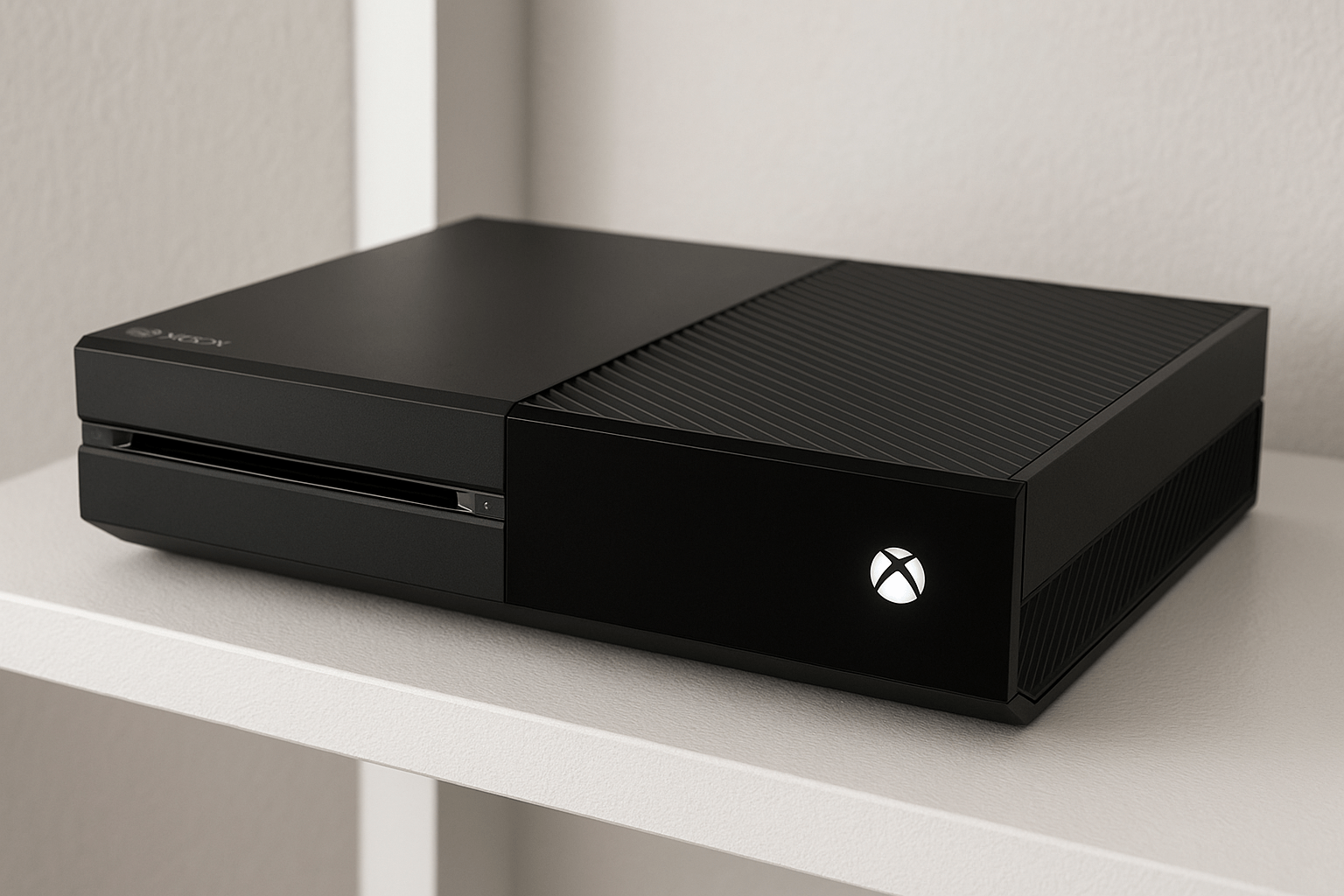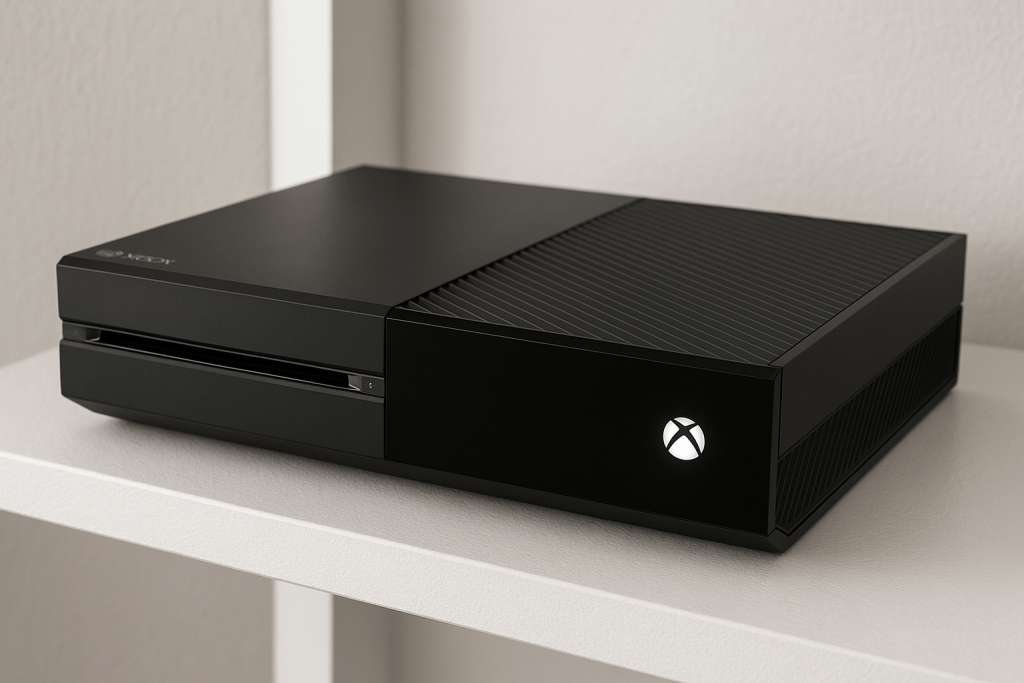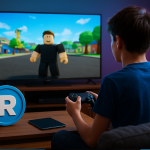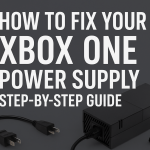Seeing the xbox one overheat message on your screen can be alarming. This warning usually means the console is running too hot and may even shut off to prevent damage. Overheating is often caused by blocked vents, heavy usage, or environmental factors. In this guide, we’ll explain why your Xbox One is overheating and show you proven solutions – from cleaning dust to improving airflow to fix the overheating problem and keep your Xbox One cool.
Common Causes of Xbox One Overheat:
Several factors can make an Xbox One run hot:
-
Dust and Debris Accumulation: Over time, dust can clog the console’s vents and fan, severely restricting airflow. This buildup prevents proper heat dissipation, causing the console to overheat.
-
Poor Ventilation: If the Xbox is placed in a cramped or enclosed space, hot air can’t escape. iFixit advises keeping at least 4–6 inches of clearance around the console. Blocking the vents (e.g. by placing the console against a wall) or putting it on a soft surface can trap heat and trigger the overheat warning.
-
High Ambient Temperature: Using the xbox one overheat message in a hot room or under direct sunlight raises its internal temperature. Ideally, room temperature should stay around +5°C to +35°C 41°F–95°F. Placing the console near heat sources like radiators or sunlit windows can quickly lead to overheating.
-
Prolonged Heavy Use: Long gaming sessions or demanding games push the console’s hardware hard, generating more heat. Without breaks, internal temperatures climb. RockIT Repairs notes that extended use without pauses significantly increases overheating risk.
-
Malfunctioning Cooling Fan: The built-in fan regulates internal temperature. If the fan fails or is partially obstructed, cooling suffers. A defective or noisy fan is a common symptom of an overheating xbox one overheat message.
-
Degraded Thermal Paste: Inside the console, thermal paste transfers heat from the CPU/GPU to the heatsink. Over years, this paste can dry out and lose effectiveness, meaning heat isn’t drawn away efficiently.
Understanding these causes helps target the right fix. The following sections cover the top steps you can take.
Steps to Fix Xbox One Overheat:
-
Improve Airflow & Ventilation. Ensure your xbox one overheat message is on a hard, flat surface in open space. Remove anything blocking the front, back, or side vents. Leave at least 4–6 inches of clearance on all sides. Do not place the console inside a cabinet or on bedding; confined spaces trap heat and cause the system to overheat. If possible, use the console vertically in a stand or horizontally on a shelf, but always make sure air can circulate freely under and around it.
-
Clean Dust and Debris. Regularly clean the console vents and fan. Turn off and unplug the xbox one overheat message. Use a can of compressed air or a dust blower to gently clear dust from the exhaust grills, fan, and heatsink. For example, blow air through the side vents (where the fan is) to push dust out of the heatsink fins. If the fan still seems clogged, carefully open the console see iFixit’s Xbox One Fan Replacement guide36† for step-by-step instructions) and clean the internal fan and heatsink directly. Keeping the vents clean guarantees smooth ventilation and can instantly lower operating temperature.
-
Remove Faulty Accessories. Disconnect any external peripherals that draw power or alter airflow. Third-party cooling fans, USB hubs, or hard drives can sometimes worsen overheating by blocking vents or misdirecting airflow. Unplug add-ons one at a time to identify if any are causing the issue. iFixit warns that some “aftermarket Xbox cooling fans can actually make the Xbox overheat because they divert the airflow to the wrong location. If removing an accessory stops the overheat warning, avoid using it or replace it with a better-designed option.
-
Cool the Environment. Keep the room temperature moderate. Avoid sunlight and heat sources. RockIT Repairs emphasizes that a cooler room helps the console cool itself. Don’t play next to windows on a hot day or in an attic/gaming room with poor AC. If your console still warms up quickly, try running a fan in the room or moving the Xbox to a cooler spot. Even small changes, like not stacking electronics on top of each other and leaving the case open, can improve heat dissipation.
Image: Using a brush to clean dust from Xbox One vents. Freeing blocked vents and fans improves console cooling. -
Power Settings & Breaks. Change the power mode to reduce load. In Settings > Power & startup, choose Energy-saving mode instead of Instant-on. Also, avoid playing on battery/surge protectors that may reduce power efficiency. If games are running too hard, close background apps: iFixit suggests closing any snapped apps or games to lower CPU usage. Importantly, take regular breaks. Turn off or pause the console every few hours to let it cool. This simple habit can prevent overheating during marathon gaming sessions.
-
Update Firmware. Make sure your Xbox One has the latest system update. While firmware doesn’t directly cool hardware, updates often include efficiency fixes. RockIT notes that up-to-date software can help temperature regulation. Go to Settings > System > Updates and select Keep my console up to date.
-
Use External Cooling Aids Optional. Some users add external cooling stands or fans under the Xbox. If you go this route, ensure any fan directs airflow into the vents, not pulling heat back in. (Beware: as iFixit noted, poorly designed add-ons can worsen airflow.) A simple laptop cooler pad can help, but the built-in fan is usually sufficient if vents are clear.
-
Reset if Needed. If overheating started after an update or app install, try a full reboot. In extreme cases, performing a soft factory reset (while keeping games) can eliminate software bugs causing CPU overuse. Always backup your data first.
-
Professional Help / Hardware Fixes. If none of the above works and overheating persists, there may be hardware damage. You might need to replace the cooling fan or reapply thermal paste. For example, iFixit’s troubleshooting suggests checking that the fan spins freely and the heatsink is dust-free. If you’re comfortable opening the Xbox, you can replace the fan or heatsink assembly following a guide. Otherwise, seek repair. RockIT Repairs offers diagnostics and can replace a broken fan or reapply fresh thermal compound for older consoles.
By following these steps, most overheating issues can be resolved. In summary: clean the internals, ensure proper airflow, avoid heat, and update settings. These actions tackle common Xbox One fan issues and cooling problems at their source.

Prevention & Maintenance Tips:
-
Regular Cleaning Schedule: Make dusting your Xbox vents a monthly habit. Consistent cleaning prevents a recurrence of the fan and overheating issues.
-
Monitor Xbox Temperature: If you’re tech-savvy, use a temperature probe inside the case (during maintenance) to check component heat. Otherwise, feel the console casing; if it’s warm after normal use, it may need cleaning.
-
Keep Room Cool: Run your console only in a temperature-controlled environment. Even a cheap desk fan blowing across the Xbox can stabilize its temperature.
-
Optimize Game Settings: In graphics-heavy games, reduce settings if possible. Lowering the load on the GPU/CPU means less heat generated.
-
Use Anchored Stand if vertical: If vertical orientation is safe for your model, a stand can improve intake airflow from the bottom.
-
Ventilation Accessories: A simple garage-floor wire rack (placing the Xbox on it) or small USB-powered fan can help circulate air under and around the console, as long as it blows into the vents.
Frequently Asked Questions
-
Q: Why does my Xbox xbox one overheat message message and shutting down?
A: The message appears when the console’s internal sensors detect high temperatures. It’s usually due to blocked vents, heavy workload, or a hot room. Check that the Xbox’s ventilation is unobstructed and clean. -
Q: How can I prevent my xbox one overheat message?
A: Ensure good airflow: place the console in an open area and clear all vents. Clean dust periodically and avoid keeping the Xbox in a hot environment. Also take breaks during long play sessions. These steps greatly reduce heat buildup. -
Q: Is it safe to open my Xbox One to clean or apply thermal paste?
A: If you’re comfortable with electronics, you can open the case following a guide iFixit has an Xbox One Fan Replacement guide36. Inside, you can clean the fan and even reapply thermal compound to the CPU/GPU. However, opening may void warranty and risks damage. For most users, blowing air through the vents and ensuring external cooling is sufficient. -
Q: Does it matter if my Xbox One is horizontal or vertical?
A: No major difference for heat, as long as vents are not blocked. Some say vertical allows more airflow through the bottom, but both orientations work if you follow clearance guidelines. Always use a stable stand and avoid covering the vents in either position. -
Q: What if none of these fixes work?
A: Persistent overheating may indicate a hardware fault. At that point, seek professional repair. According to repair specialists, they can diagnose fan or motherboard issues that basic cleaning won’t fix.
By addressing the root causes cleaning out dust, improving airflow, and moderating usage you should eliminate the xbox one overheat message” and enjoy cooler, more reliable gaming. If you found this guide helpful, share it with other gamers and feel free to leave your comments or tips below to help the community!






